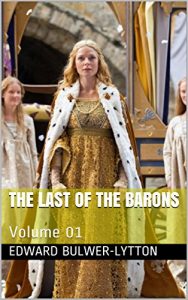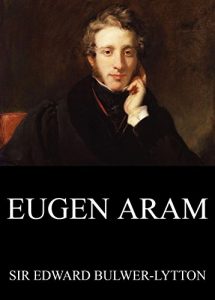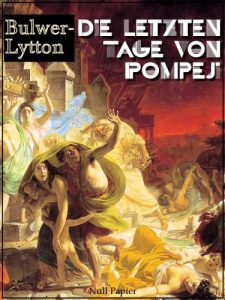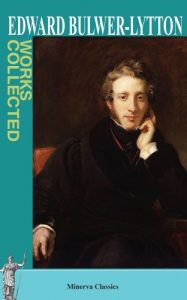Westward, beyond the still pleasant, but even then no longer solitary,
hamlet of Charing, a broad space, broken here and there by scattered
houses and venerable pollards, in the early spring of 1467, presented
the rural scene for the sports and pastimes of the inhabitants of
Westminster and London. Scarcely need we say that open spaces for the
popular games and diversions were then numerous in the suburbs of the
metropolis, grateful to some the fresh pools of Islington; to others,
the grass-bare fields of Finsbury; to all, the hedgeless plains of
vast Mile-end. But the site to which we are now summoned was a new
and maiden holiday-ground, lately bestowed upon the townsfolk of
Westminster by the powerful Earl of Warwick.
Raised by a verdant slope above the low, marsh-grown soil of
Westminster, the ground communicated to the left with the Brook-
fields, through which stole the peaceful Ty-bourne, and commanded
prospects, on all sides fair, and on each side varied. Behind, rose
the twin green hills of Hampstead and Highgate, with the upland park
and chase of Marybone, its stately manor-house half hid in woods. In
front might be seen the Convent of the Lepers, dedicated to Saint
James, now a palace; then to the left, York House, [The residence of
the Archbishops of York] now Whitehall; farther on, the spires of
Westminster Abbey and the gloomy tower of the Sanctuary; next, the
Palace, with its bulwark and vawmure, soaring from the river; while
eastward, and nearer to the scene, stretched the long, bush-grown
passage of the Strand, picturesquely varied with bridges, and flanked
to the right by the embattled halls of feudal nobles, or the inns of
the no less powerful prelates; while sombre and huge amidst hall and
inn, loomed the gigantic ruins of the Savoy, demolished in the
insurrection of Wat Tyler. Farther on, and farther yet, the eye
wandered over tower and gate, and arch and spire, with frequent
glimpses of the broad sunlit river, and the opposite shore crowned by
the palace of Lambeth, and the Church of St. Mary Overies, till the
indistinct cluster of battlements around the Fortress-Palatine bounded
the curious gaze. As whatever is new is for a while popular, so to
this pastime-ground, on the day we treat of, flocked, not only the
idlers of Westminster, but the lordly dwellers of Ludgate and the
Flete, and the wealthy citizens of tumultuous Chepe.
hamlet of Charing, a broad space, broken here and there by scattered
houses and venerable pollards, in the early spring of 1467, presented
the rural scene for the sports and pastimes of the inhabitants of
Westminster and London. Scarcely need we say that open spaces for the
popular games and diversions were then numerous in the suburbs of the
metropolis, grateful to some the fresh pools of Islington; to others,
the grass-bare fields of Finsbury; to all, the hedgeless plains of
vast Mile-end. But the site to which we are now summoned was a new
and maiden holiday-ground, lately bestowed upon the townsfolk of
Westminster by the powerful Earl of Warwick.
Raised by a verdant slope above the low, marsh-grown soil of
Westminster, the ground communicated to the left with the Brook-
fields, through which stole the peaceful Ty-bourne, and commanded
prospects, on all sides fair, and on each side varied. Behind, rose
the twin green hills of Hampstead and Highgate, with the upland park
and chase of Marybone, its stately manor-house half hid in woods. In
front might be seen the Convent of the Lepers, dedicated to Saint
James, now a palace; then to the left, York House, [The residence of
the Archbishops of York] now Whitehall; farther on, the spires of
Westminster Abbey and the gloomy tower of the Sanctuary; next, the
Palace, with its bulwark and vawmure, soaring from the river; while
eastward, and nearer to the scene, stretched the long, bush-grown
passage of the Strand, picturesquely varied with bridges, and flanked
to the right by the embattled halls of feudal nobles, or the inns of
the no less powerful prelates; while sombre and huge amidst hall and
inn, loomed the gigantic ruins of the Savoy, demolished in the
insurrection of Wat Tyler. Farther on, and farther yet, the eye
wandered over tower and gate, and arch and spire, with frequent
glimpses of the broad sunlit river, and the opposite shore crowned by
the palace of Lambeth, and the Church of St. Mary Overies, till the
indistinct cluster of battlements around the Fortress-Palatine bounded
the curious gaze. As whatever is new is for a while popular, so to
this pastime-ground, on the day we treat of, flocked, not only the
idlers of Westminster, but the lordly dwellers of Ludgate and the
Flete, and the wealthy citizens of tumultuous Chepe.












